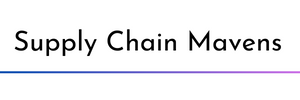“When will they ever learn? When will they ever learn?” - Pete Seeger
There has been a talent shortage in supply chain for years. It is due to several factors including the growth in the importance of the supply chain industry but has been recently exacerbated by the retirement of the Baby Boomers and those retirements have only increased with the pandemic.
Organizations are constantly on the lookout for supply chain talent at all levels. They must find, develop, and ultimately work to retain this talent to succeed. It is a lot like juggling; all three balls need to be in the air constantly. Drop even one ball and you could be in for trouble. Drop two and it could be disastrous.
But of the three steps, the most important is developing people. An organization that is known for talent development has little problem with recruiting or retaining people. Developing supply chain talent is hard and it is in this step where most companies fail. Talent development comes in three parts. The first involves some sort of orientation, which may be formal or informal. The new employee is indoctrinated in a history of the company, learns the organization, its vision, and goals. Hopefully they will be able to meet some of the company leadership. This type of training gives people a baseline and a point of reference. They get to know the organization and what is stand for and there is a feeling of purpose and belonging. The second part is on-the-job training, or OJT. Here the new employee is usually teamed with someone that provides general direction on specific processes and procedures. But if this is all people get, they won’t stay long.
Developing people is more than just winding them up and letting them go. Orientation and OJT provide the “What” and the “How.” To retain people, companies must also provide the “Why.” As organizations invest in new products, processes, market channels, and techniques to stay competitive they also need to invest in their people. Developing people is an ongoing exercise that never ends. This comes in the form on a continuous training plan. This involves the input of employees, their manager, and Human Resources professionals Training rewinds, reinvigorates, and reenergizes employees and keeps them engaged. Successful organizations are never stagnant, and neither are successful people.
When being recruited, be sure to ask about training. Does the organization have:
A formal training program
Individualized, annual training plans that include internal, external, and specialized training as necessary
A tuition reimbursement plan
Encourages and supports participation in professional organizations
Encourages employees to expand their personal networks by participating in local chapters of these organizations and share their knowledge at annual events
If the answers are “Yes,” then the organization is built on a culture that is serious about developing people and will take a long-term view of you and your career.
For What It’s Worth is a column written by Gary Smith, CPIM-F, CSCP-F, CLTD-F, that examines current issues in Supply Chain. Gary welcomes your comments and feedback. You can email him at gary@supplychainmavens.net.

